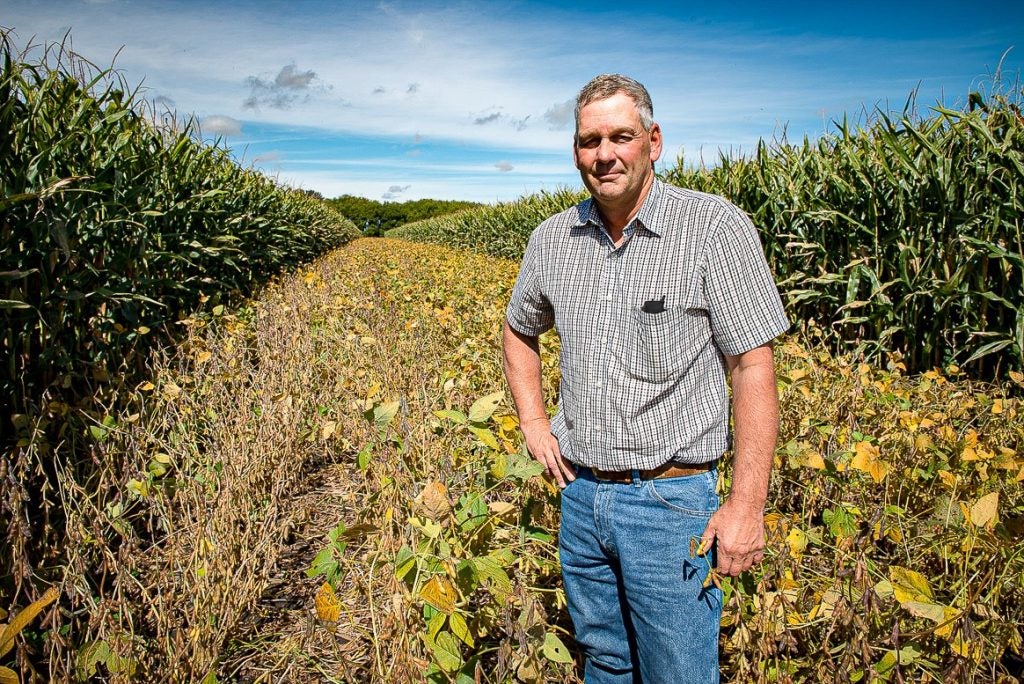This blog is authored by Bethany Baratta, senior writer at Iowa Soybean Association. It originally posted on the Iowa Soybean Association Newsroom.
While many farmers add cover crops with the goal to improve soil health, some participants in an Iowa Soybean Association (ISA) study are turning cover crops into new business opportunities. Capturing profit opportunities could result in expanded cover crop use in the state, the study showed.
Twenty Iowa farmers were chosen for the study during the 2018 crop year to take a closer look at the relationship between conservation adoption and farm production and profitability. Study participants were chosen based on their use of conservation practices such as cover crops and conservation tillage. Combined, participants raised 27,535 acres of corn and soybeans, and were geographically dispersed throughout the state.
Farmers earn cover crops revenue, additional value
Data collected by farmers and shared via interviews were aggregated and summarized in 2019. Researchers observed the crop rotations for each farmer to determine the economic and yield impacts of conservation practices. Those of particular interest were reduced- and no-till systems, nutrient management and cover crop use.
Five of the 20 participants harvested cover crops from 560 acres in 2018. These harvests generated an estimated average net revenue of $117.64 per acre after cover crop seed, seeding and harvest costs were paid.*New study shows how cover crops can create new business opportunities and help farmers mitigate risk. Share on X
The five farmers realized additional value from the cover crops in a variety of ways:
- Grazing 250 acres of rye cover for a feed value of $50 per acre;
- Harvesting 160 acres of rye, oat, and winter wheat grain for an average net value of $313 per acre;
- Harvesting 150 acres of rye hay for a net value of $66 per acre;
- Harvesting 4 acres of straw following grain harvest for a net value of $163 per acre.
For one farmer, skepticism turns into new business venture

Mitchell County farmer Dean Sponheim uses cover crops to improve soil health and profitability on his farm. (Photo: Joseph L. Murphy/Iowa Soybean Association)
Farmer Dean Sponheim was invited to learn about cover crops at a meeting in the summer of 2012. He was more than skeptical at first, he said.
“I was always led to believe that we needed to keep our corn and bean fields clean of weeds,” he said. “And now we’re going to spread another species into that? I thought that was ridiculous.”
But the more he and five other neighbors learned about the potential benefits to soil health, the more they were intrigued. They began growing cover crops in 2012. The first two years, he said, were a disaster. The weather wasn’t ideal for raising the five-way mix Sponheim initially chose to plant.
The third year, however, he found success focusing on raising rye as a cover crop.
He and his neighbors expanded their covered acres. His five neighbors, with whom he initially set out to try growing cover crops, expanded their acres of cover crops.
Today, Sponheim owns and operates Sponheim Sales and Services, LLC, in Nora Springs. He and his business partners contract with farmers in Iowa and North Dakota to grow 1200 acres of rye and 500 acres of oat seeds for the cover crop business, which has become a “one stop shop for all things cover crops,” Sponheim said.
Cover crops help mitigate risk, build soil health
Farmer Jeff Jorgenson from Sidney, Iowa has demonstrated how grazing and haying cover crops helps mitigate risk.
Jorgenson said he saves about $10,000 per year in silage costs by allowing his 200 head of cows to graze his rye cover crops.
“That $10,000 is not even factoring in the benefits you have in soil tilth,” he said. “That adds a lot.”
Jorgenson began raising cover crops in 2013, first using it to graze his cattle. He’s then switched to harvesting the rye for hay but will likely switch back to solely grazing because it doesn’t require the time to cut, bale and chop the rye for silage, he said.
“It’s been a good fit for our operation to get a lot of feed without taking ground out of row crop production,” Jorgenson said.
Expanding conservation efforts beyond cover crops
Sponheim, a staunch strip-tiller, says he sees cover crops as a potential springboard to no-tilling.
“Even in black, cold, wet soils, I think cover crops will play a major role in getting this soil quicker to the point where we can go to no-till,” Sponheim said. “The jury’s still out, but that’s the ultimate goal for us.”
Currently, Jorgenson grows cover crops on 20% of his corn acres. Growing the number of acres of cover crops will require going a step further, he said.
“If we’re really going to do cover crops the right way, we have to get to a point where we’re producing our own seed,” Jorgenson said. “We also want to find a better and easier way to get it seeded and planted in the summer and fall. We haven’t spent the right amount of time at it yet, but it’s coming.”
*Note: Cover crop seed and seeding costs were averaged across the 20 farms in the study and do not represent the average costs of the five farmers who harvested their cover crops.
For more information, please contact Bethany Baratta at bbaratta@iasoybeans.com.









